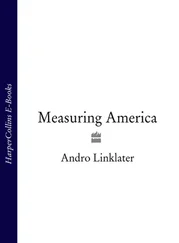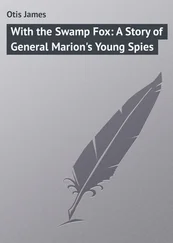In the spring of 1798, he sent an urgent coded message to Gayoso, newly promoted to be govenor of Louisiana in place of the openhanded Carondelet: “Observed everywhere, I dare not communicate with you, nor should you try to do so with me; Marshall has attacked my honor and fidelity. You should not trust the western people, because some are traitors. Fortify your frontiers well. While I remain as at present all is safe. Have buried my cipher, but I will recover it. You have many spies in your country. Do not mention me nor write my name, I implore you in the name of God and our friendship.”
The key phrase was “I will recover it.” The hint that he might return to spying was thrown in to give Gayoso a renewed interest in keeping his secret. Everything that Wilkinson did over the next three years was conditioned by the need to persuade the Spanish authorities that as an agent he was a sleeper rather than retired.
17
ELLICOTT’ S DISCOVERY
IN AUGUST 1798, Brigadier General Wilkinson himself took four hundred men in a convoy of thirty boats down the muddy current of the Mississippi. They floated past Natchez, to the last curve in the river before it cut through the thirty-first parallel. At a point where the ground rose to a small hill above the east bank, known locally as Loftus Heights, the general ordered several acres of canebrake and prickly thorn to be cleared for the construction of a fort. In honor of his unexpected benefactor, he named it Fort Adams. A year earlier, Fort Massac, five hundred miles to the north, had marked the extent of U.S. power. Now New Orleans lay tantalizingly close.
That dramatic change owed nothing to the efforts of the U.S. army under its commander in chief, but much to Andrew Ellicott’s success in guiding American loyalties toward independence in the face of Gayoso’s refusal to implement the treaty. When he saw the Spanish troops begin to evacuate the Natchez fort in February 1798, Ellicott wrote in understandable triumph to his wife, Sally, “My Love,—I have at length worried the Spaniards out.” By the time Wilkinson made his late arrival, Winthrop Sargent, former secretary of the Northwest Territory, had been installed as governor of Natchez, and Ellicott was deep in the wilderness east of the Mississippi cutting a trail through the matted undergrowth along the line of the thirty-first parallel with a team of American and Spanish astronomers, surveyors, and axmen.
In October, the general visited the two boundary commissioners, Ellicott and Spain’s Esteban Minor, in their camp. His motives caused deep suspicion on both sides. Ostensibly the purpose was to join Sargent and Ellicott in a conference to choose who should be involved in the government of the future Mississippi Territory. The discussions were dominated by Wilkinson, partly because Sargent was ill, but mostly because Ellicott felt himself to be under an obligation to the general.
In steamy heat and attacked by clouds of gnats and mosquitoes, the scientist’s unyielding determination to make exact astronomical measurements had driven the leading surveyor, Thomas Freeman, and the head of the military detachment, Lieutenant John McLary, to outright mutiny. As the U.S. boundary commissioner, Ellicott had the authority to suspend Freeman, but to deal with McLary, a military appointee, he needed Wilkinson’s intervention. Before the meeting at the camp, Ellicott asked the general for help and received a heartwarming reply: “My friend, you are warranted in drawing upon my confidence and my friendship at your discretion . . . Your refractory subaltern shall be relieved and his successor shall be taught how to respect a national Minister.”
As he later admitted, Ellicott had already begun to discount the importance of the information he had sent Pickering, and it was certainly outweighed by the value of such prompt assistance. At the meeting, he supported Wilkinson in the appointment of judges and other federal officials. He also gladly promised to comply with the general’s private request for sketch maps of the terrain that would show “the interesting Roads, and practicable points of approach from below with such remarks on the face of the country as may assist a military man in his conceptions and intelligence of the theatre before him.” Then, freed of his two troublemakers, Ellicott returned to his scientific odyssey through the unmapped wilderness.
At the very end of October, Wilkinson spent several days in discussions at Loftus Heights with Daniel Clark Jr., who had traveled up from New Orleans to see him. On Ellicott’s recommendation, Clark had been appointed U.S. consul in New Orleans. When the evacuation of Natchez took place, Clark formally applied to become a citizen of the United States. Less formally, he developed a plan with his uncle for his future country to seize New Orleans by force without further delay. They feared that the power of the gigantic French armies terrorizing Europe would be used to force its frail ally to hand over New Orleans and all Louisiana. Clark’s journey to see Wilkinson was undertaken to persuade him join in a preemptive strike before the formidable French took control.
Wilkinson pretended to be enthusiastic about the plan for seizing New Orleans but claimed that the government’s policy of avoiding war with Spain prevented him from taking any action. “I would to heaven I could procure an order for the operation you wish,” he assured Clark senior in a letter from Fort Adams. “I would hazard my fame and fortune without much hesitation to precipitate an event which is to happen.” In reality, he could not afford to risk Gayoso’s enmity, and there was never the slightest chance that he would undertake any action against Spanish forces.
Suspicious about Wilkinson’s real motives, Clark may have asked whether the general was still being paid by Gayoso, because it is equally clear that Wilkinson informed Clark, truthfully, that since the western settlers had achieved their goal with the opening of the Mississippi, the Spanish Conspiracy was at an end. From Fort Adams, Clark wrote his uncle that he believed this “assurance that the disgraceful connexion should be broken off.”
On November 4, the young man left the fort having failed to achieve his object. The meeting might have been utterly inconsequential, except that out of it grew a campaign to expose Wilkinson that proved so damaging, his past as a paid agent of Spain came in the end to haunt him like Banquo’s ghost.
THE FIRST STEP WAS TAKEN, inadvertently, by the guileless Andrew Ellicott. On November 8, Ellicott reached Darling’s Creek, a tributary of the Pearl River, and was preparing a map of the area that Wilkinson had requested. Then, as he put it in his journal, “by a very extraordinary accident, a letter from the Governor General [Gayoso] on its way to a confidential officer in the Spanish service [Power] fell into my hands for a few hours.” In fact what he had was Power’s copy of the letter. Ellicott’s refusal to explain how it came into his hands suggests it was stolen and had to be returned before the loss was discovered. Only Clark could have engineered the theft of the letter, and its swift conveyance to Ellicott. His motives can be deduced from its contents.
Gayoso’s letter was written in response to the news of Wilkinson’s visit to the commissioners’ camp. This, the governor suggested, had to be seen in relation to the Spanish Conspiracy, and the fears of those involved that their participation might be exposed by publication of their letters. “I wonder you could not see the design of General Wilkinson’s visit to Mr Ellicott’s and Mr Minor’s camp,” Gayoso explained to Power. “It was to fall upon some measures to obtain his papers. They are all safe and never will be made use of against him if he conducts himself with propriety. In fact the originals are at the court [in Madrid], the copies only are here.”
Читать дальше












